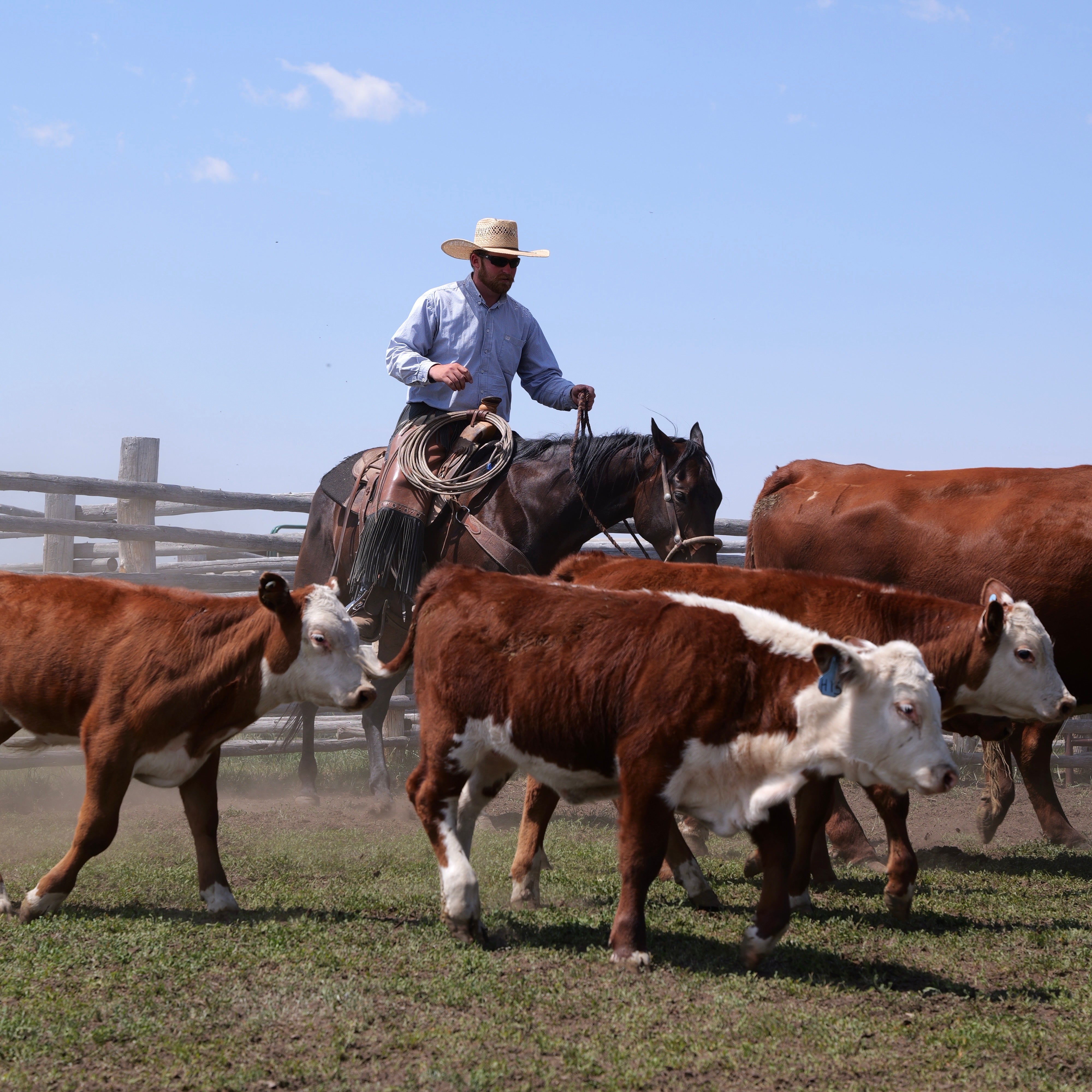Article: All Hat, No Cattle: An Exploration of the Counterfeit Cowboy, Ranching Culture, and American Beef

All Hat, No Cattle: An Exploration of the Counterfeit Cowboy, Ranching Culture, and American Beef
Everybody wants to be a cowboy, or so it seems. Truck stops sell plastic cowboy hats and cheap belt buckles. Fashion labels take inspiration from Western style, popularized by television shows. And people flock to Wyoming and Montana, hoping for a “cowboy experience.”
Even a quick scroll on social media proves the public is deeply fascinated with and attracted to the ranching lifestyle. From influencers vacationing on dude ranches to fashionistas wearing pearl snap shirts, one thing is clear: Americans love the Old West. But why?
And why do some people take offense at the recent influx of interest?
You might’ve visited this article expecting a hard-hitting exposé. Despite the “clickbait” title, we aren’t taking a sensational approach to the topic. Instead, we want to focus on the debate surrounding cowboy culture, its origin, and American beef.
What is offensive about cowboys?
Here at Lazy T Ranch, we raise all-natural beef the Western Way, meaning we only use cowboys on horseback to work cattle. We sell beef directly to customers and ship nationwide. As a result, we market ourselves on social media and frequently post videos of our crew in action.
We’ve received comments that express mixed feelings toward cowboys, ranching, and beef. Some people believe American cowboying is a form of cultural appropriation, while others view it as a celebration of heritage. Some people appreciate seeing Agriculture highlighted on social media, while others consider its romanticization and newfound popularity with young audiences disrespectful. Of course, even beef receives its fair share of debate.
Ranching is personal.
We would argue that cowboying and ranching spark emotion because they represent certain values, i.e., legacy, tradition, simplicity, and freedom. How a person views those values in association with ranching determines their response to “cowboy content.”
But what is a cowboy?
By definition, a cowboy is a usually mounted cattle-ranch hand. “Cowboy” can also refer to one who tends cattle or horses, a rodeo performer, or one who has qualities popularly associated with cowboys, as stated by Merriam-Webster Dictionary.
Official definition aside, the word “cowboy” means different things to different people. The public seems to label anyone a cowboy if they dress the part or ride a horse. Meanwhile, beef producers hold the term in high esteem, only using “cowboy” to refer to those who work cattle for a living.
Over the years, we’ve asked our crew what qualifies a person to be labeled a cowboy. Although their answers have varied, they’ve agreed that “cowboy” isn’t a word to be used lightly.
Our former Livestock Manager told us, “If someone works cattle, they can be called a cowboy by other people, but they shouldn’t call themselves a cowboy. They can say they cowboy, like, use the word as a verb, but the title is a big deal and should be reserved for old-timers who embody what it means to be a cowboy.”
Perhaps the most important thing to note here is the subjectivity.
What is a counterfeit cowboy?
The question of what makes a cowboy seems to be at the axis of the debate. A person’s answer determines how they distinguish a fake cowboy from an authentic one.
We’ve received a range of feedback about our cowboys, from uplifting messages to people commenting that our crew’s boots aren’t dirty enough to qualify them as real cowpokes. Seriously. An opinion in our comments that we find particularly interesting is that American (United States) cowboys are fake due to their historical origins.
Where did cowboys come from?
The first cowboys originated from Mexico. In the early 1500s, after the Spanish arrived in the Americas, they started building ranches and raising cattle. Horses were brought over from Spain and used to work livestock on the ranches. Mexico’s native cowboys, called vaqueros, were hired by the ranchers to tend to cattle. They were revered for their roping, riding, and herding.
Ranching became popular in present-day Texas, New Mexico, and Arizona by the early 1700s. Fifty years later, livestock practices had spread to California and more areas in the West. Many English-speaking settlers adopted aspects of the vaquero culture, such as clothing style and cattle-driving methods.
A recent study proves African cattle arrived in the Americas as early as the 1600s, possibly suggesting that the growth of cattle herds in Mexico and on the island of Hispaniola was linked to the slave trade. This might mean the original cowboys were largely enslaved Africans.
Without a doubt, cowboys came from diverse backgrounds, including Native Americans, Mexicans, African-Americans, and settlers from the United States and Europe.
Who has the right?
American (United States) cowboys have created a style and reputation of their own. They’ve become an iconic symbol of the American West, crediting the vaqueros for traditional cattle ranching methods and more. Still, the question remains: Is American cowboying a form of cultural appropriation since it draws so much inspiration from Mexican cattle production?
Perhaps the question we should ask is . . .
Can culture be shared?
The United States is a melting pot of nationalities, representing a diverse mix of people. Shouldn’t the history of cattle ranching be reflected and honored?
Cowboying, like all of Agriculture, is inclusive. It doesn’t span a singular culture. It has a rich heritage and continues to inspire the world.
Does cowboying differ across the United States?
Not only does cowboy culture vary based on country, but it also varies regionally. Cowboy style, etiquette, and technique differ from state to state. Further support to the argument that cowboying is nuanced and broadly representative!
What’s with all the backlashes?
We aren’t sure, but we know supporting the health of Agriculture should be a top priority. Whether someone is a fake or real cowboy shouldn’t matter. Instead, we should celebrate the existence of cattle ranches, the public’s renewed interest in ranching and cattle production, and use it to spread Ag education and support local food systems.
Which leads to our final point:
Beef shouldn’t be divisive.
Grass-fed or grain-fed, grass-finished or grain-finished . . .
Organic, pasture-raised, dry-aged, wet-aged . . .
Don’t fall victim to the chatter. Check out these articles to know the truth about beef.
Answers to 10 Most-Asked Questions About Beef
What’s the Deal with Beef: Exploring the Controversy and Internal Struggles of the Beef Industry
The Difference Between Grass-Fed and Grass-Finished Beef and Why You Should Care
Why Choose Lazy T Ranch for Ordering Beef Online? Our Commitment to Quality and Care

